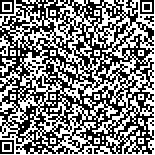| 摘要: |
| 海滨日晒盐田具有稳定且独特的生态系统。淡化浓海水排入盐田制盐,对盐田生态系统的稳定及盐田的可持续发展具有一定的影响。本研究分析天津汉沽淡化浓海水日晒盐田不同季节不同盐度盐池原核微生物多样性现状及群落结构变化,以期为评估淡化浓海水对盐田原核微生物群落影响提供理论依据。采用温度梯度凝胶电泳和序列测定等方法,分析不同月份不同盐度盐池中细菌和古菌的多样性与群落结构变化。分别采用香农-威纳指数、加权丰富度指数和均匀度指数分析盐田微生物群落多样性、丰富度和均匀度。结果表明,淡化浓海水和溴后水中均未检测出细菌和古菌。不同月份不同盐度盐池样本中细菌多样性变化不大,优势菌主要为γ-变形菌门(γ-Proteobacteria)中的Spiribacter salinus和Pseudoalteromonas sp.;古菌仅出现在盐度最高的Ⅶ号盐池中,优势古菌为广古菌门(Euryarchaeota)的Halogeometricum sp.。天津汉沽淡化浓海水日晒盐田中细菌的多样性和丰富度较低,春夏两季细菌群落结构较为稳定,秋冬季节细菌群落结构变化明显。盐度不同的盐池中细菌群落结构变化较大,随着盐度逐渐升高,Spiribacter salinus逐渐取代Pseudoalteromonas sp.成为占主要地位的优势菌种。 |
| 关键词: 淡化浓海水 日晒盐田 原核微生物多样性 PCR-TGGE |
| DOI:10.11759/hykx20190115003 |
| 分类号:Q-9 |
| 基金项目:天津市科技支撑计划项目(15ZXCXSF00040);天津市自然科学基金项目(17JCBJC22900);青岛海洋科学与技术国家实验室开放基金项目(0F2015N015);天津科技大学青年教师创新基金项目(2015LG10);国家大学生创新训练计划项目(201810057043) |
|
| Diversity analysis of prokaryotic microorganisms in the solar saltern of concentrated seawater from desalination |
|
QIN Le-ning, HUANG Xin-jie, ZHU Da-ling, SHI Ya-min, TANG Na, WANG Xue-kui
|
|
Tianjin Key Laboratory of Brine Chemical Engineering and Resource Eco-utilizaion, College of Chemistry Engineering and Material Science, Tianjin University of Science and Technology, Tianjin 300457, China
|
| Abstract: |
| Coastal solar saltern has a stable and unique ecosystem. Concentrated seawater discharged into a solar saltern for salt production would exert a certain influence on the ecosystem stability and the sustainable development of the solar saltern. To provide a theoretical basis for evaluating the effect of concentrated seawater from desalination on prokaryotic microorganisms in the solar saltern, the prokaryotic microbial diversity and the community structure changes in the salt ponds at different salinities and seasons were analyzed in the solar saltern of concentrated seawater from desalination in Hangu, Tianjin. Temperature gradient gel electrophoresis and sequencing methods were used to analyze the bacterial and archaeal diversity and community structure in the concentrated seawater solar saltern of Hangu every month in a year. The Shannon-Wiener index (H), range-weighted richness index (Rr), and Pielou evenness index (E) were evaluated to analyze the diversity, richness, and evenness of the microbial community, respectively. Results indicated that bacteria and archaea were not detected in the concentrated seawater after the processes of seawater desalination and bromine production, respectively. The bacterial diversity demonstrated little changes in the samples at different months and salt ponds, and the dominant bacterial species were primarily Spiribacter salinus and Pseudoalteromonas sp. in the phylum of γ-Proteobacteria. Archaea was found only in pond of No. Ⅶ with the highest salinity, and the dominant archaeal species was primarily Halogeometricum sp. in the phylum of Euryarchaeota. Analysis of the diversity indexes revealed that both the diversity and richness of bacteria were lower in the concentrated seawater solar saltern of Hangu. The bacterial community structure was relatively stable in spring and summer and changed obviously in autumn and winter. The bacterial community structure changed significantly in salt ponds with different salinities, and S. salinus gradually replaced Pseudoalteromonas sp. with the gradual increase in salinity and became the dominant bacterial species. |
| Key words: concentrated seawater by desalination solar saltern prokaryotic microbial diversity PCR-TGGE |
